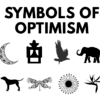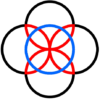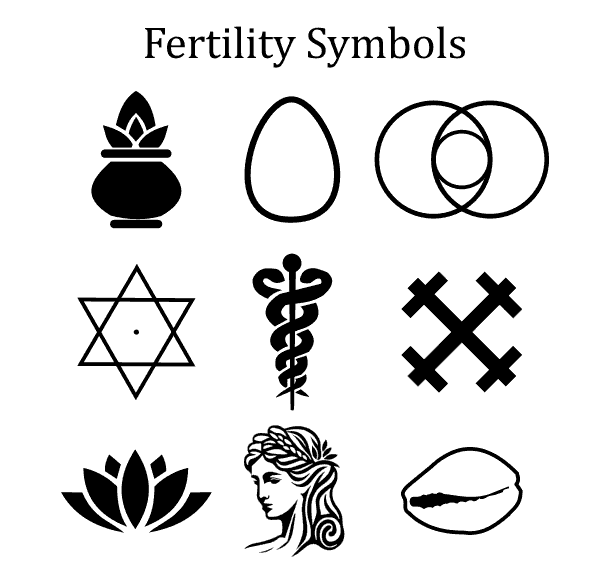
Fertility is the force that brings things into existence and hence is at the very core of the material (manifested) universe. It represents creation, reproduction, sustenance, growth, abundance, nurturing, manifestation, and the cyclic nature of life.
It is no surprise that throughout history, ancient cultures have revered fertility and devised various symbols to represent its profound significance. Contemplating and working on these symbols can help amplify the power of fertility in your own life.
In this article, let’s explore 18 potent fertility symbols and their deeper meanings.
18 Fertility Symbols & their Deeper Meanings
1. Vesica Piscis
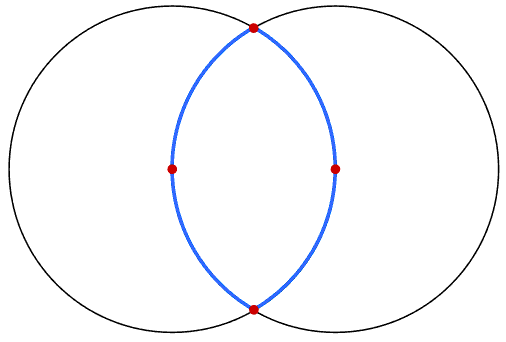
The Vesica Piscis is an ancient symbol resembling a lens, created by two overlapping circles of equal radius. These circles represent the material (divine masculine) and spiritual (divine feminine) worlds, and the resulting lens shape symbolizes fertility and creation.
This shape is also regarded as the ‘Cosmic Womb,’ from which all creation emanates. In-fact, the Vesica Piscis is the foundational Sacred Geometry symbol out of which many other symbols are born out of. This includes the Triquetra, Seed of Life, Flower of Life, Metatron’s Cube, and the Platonic Solids.
In addition to fertility and creation, The Vesica Piscis is also a symbol of balance, interconnection, unity, oneness, as well as duality.
2. Six-Pointed Star
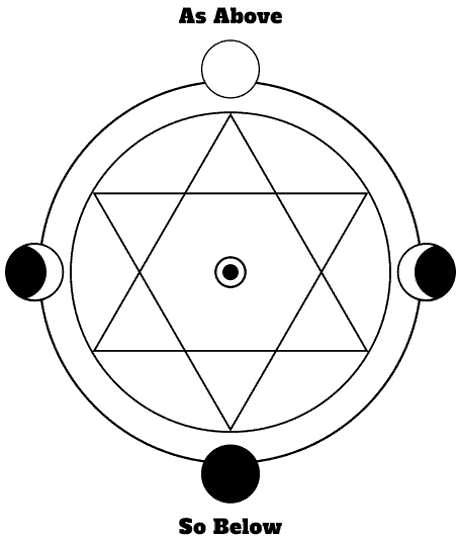
Another symbol that is very similar to the Vesica Piscis is the Six-Pointed Star (Hexagram). This symbol consists of two overlapping triangles, one pointing downward and the other point upward. Both these triangles have the same center.
The upward pointing triangle symbolizes the Divine Masculine and the downward one symbolizes the Divine Feminine. Their common center symbolizes the point of creation. This way the hexagram is also a symbol of fertility, creation, balance, harmony, interconnection, and oneness.
The Hexagram is known as the Star of David in Judaism and the Shatkona in Hinduism.
3. Kokopeli

Kokopelli is a Native American deity commonly associated with fertility, love, marriage, childbirth, and agriculture. He is often depicted as a humpbacked flute player with feathers or antenna-like protrusions on his head.
His flute playing is associated with spring, abundance, fertility, and the dispelling of negative energy while ushering in prosperity. In some cultures, the flute music is also associated with bringing rain. Many tribes believe that Kokopelli is also seen on the moon, further symbolizing fertility.
4. Kumbha (Earthen Pot)
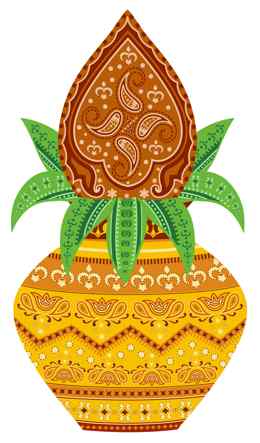
The Kumbha (Earthen pot) holds great spiritual significance in Hindu, Jain and Buddhist mythology as it represents the womb and hence fertility, procreation, and sustenance. In-fact, in Hindu mythology there are many references to humans born out of the Kumba.
Not surprisingly, the Kumbha holds a central place in Hindu rituals and festivals. Water stored within a consecrated Kumbha is considered sacred and is used for various religious ceremonies to purify and sanctify objects and spaces.
The Western equivalent of the Kumbha is the cauldron, which was also viewed as a symbol of fertility and creation in various pagan traditions.
5. Triple Goddess
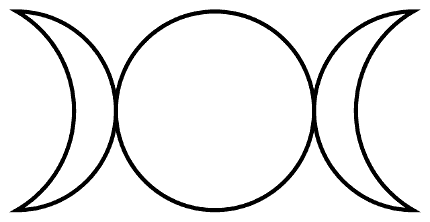
The Triple Goddess is an ancient pagan symbol that symbolizes the three primary phases of the feminine life cycle. It features a full moon surrounded by two crescent moons on either side. The full moon signifies fertility, completion, abundance, and creation. This symbol serves as a representation of Venus, the Goddess of Beauty and Love.
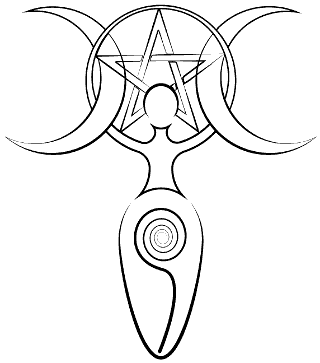
Another symbol that is closely related to the Triple Goddess is the Spiral Goddess (as shown in the image above) which is also a potent symbol of fertility.
6. Cowrie Shells
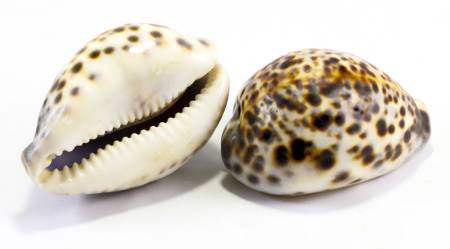
Cowrie shells have been used as symbols of good luck, abundance, wealth, womanhood, and fertility in many cultures around the world.
In African cultures for instance, cowrie shells were and are still worn as jewelry by women for spiritual protection, attracting good luck, to enhance fertility, and to ensure safe childbirth. These shells even have a history of being used in rituals and prayers to invoke the blessings of fertility deities and spirits.
7. Twin Serpents

The Twin Serpents is a symbol that has appeared across various ancient cultures and civilizations. Consisting of two intertwining snakes it is primarily a symbol of healing but is also related to creation and fertility. The snakes represent the feminine and masculine energies and the head of the staff on which they intertwine represents the point of creation.

Some popular depictions of the Twin serpents symbol includes the Caduceus from ancient Rome and the Twin Kundalini serpents in Hinduism.
8. Mara’s cross
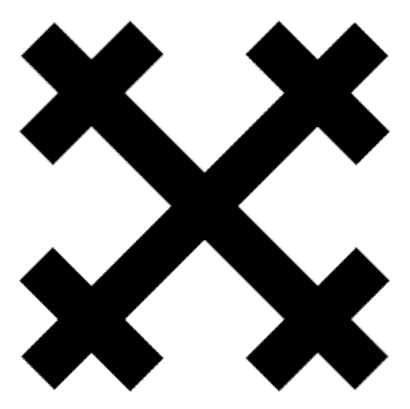
Mara’s Cross is a popular Latvian talisman believed to bring blessings of fertility, good fortune, and protection to those who display or wear it. It is associated with the Latvian earth goddess Mara.
In Latvian folklore, Mara is revered as a guardian of women, children, and the household. She is closely linked to the rhythms of nature and the agricultural cycles. The cross’s circular design represents the sun, which plays a crucial role in the growth of crops and the fertility of the land.
9. Gaia
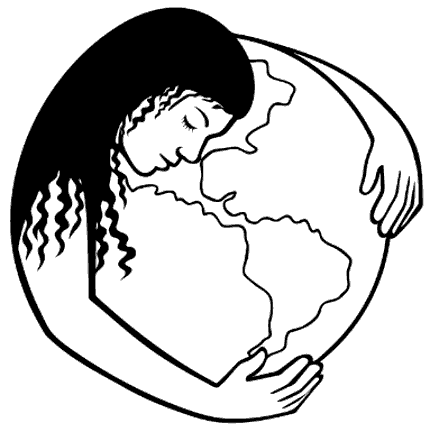
Gaia, in Greek mythology, is a symbol of fertility, motherhood, and the Earth itself. Gaia is considered the mother of all living beings and is associated with the creation and nurturing of life. She is often depicted with abundant crops, fruits, and animals to signify her role in providing sustenance and fertility to the world.
A few other earth goddesses similar to Gaia who are associated with fertility include Terra Mater (Roman), Danu (Celtic), Pachamama (Inca), Coatlicue (Aztec), Demeter (Greek), Cybele (Anatolia), and Ninhursag (Sumerian).
10. Aphrodite
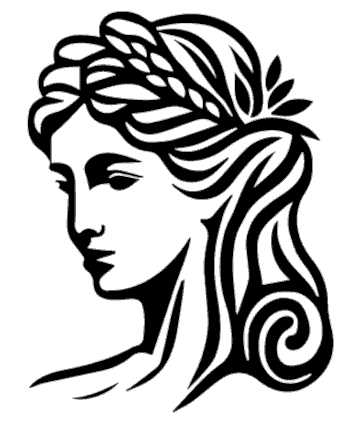
In Greek mythology, Aphrodite is the goddess of love, beauty, pleasure, and procreation. She is believed to inspire passion and romantic love, which are essential aspects of human fertility and the continuation of the human race.
A few other goddesses often associated with both love and fertility, are as follows:
- Demeter (Greek): Demeter is the Greek goddess of agriculture, harvest, and fertility. She is often depicted as a nurturing figure who presides over the growth of crops and the cycles of the seasons.
- Hera (Greek): Hera is the Greek goddess of marriage, childbirth, and family. She is considered a protector of women and is invoked for blessings related to marriage and fertility.
- Isis (Egyptian): Isis is an ancient Egyptian goddess known for her maternal and protective qualities. She is associated with fertility, motherhood, and healing.
- Freyja (Norse): Freyja is a Norse goddess associated with love, beauty, and fertility. She is often invoked for blessings related to love, marriage, and conception.
- Frigg (Norse): Frigg is another Norse goddess linked to marriage, motherhood, and fertility. She is considered a guardian of families and domestic life.
- Lada (Slavic): Lada is a Slavic goddess associated with love, fertility, marriage, and family. She is often depicted as a symbol of motherhood and abundance.
- Ceres (Roman): Ceres is the Roman counterpart of Demeter and is revered as the goddess of agriculture and fertility. She is invoked for blessings related to crops and abundance.
- Astarte (Phoenician): Astarte is an ancient Phoenician goddess associated with love, sexuality, and fertility. She is often depicted with symbols of fertility and sensuality.
- Hathor (Egyptian): Hathor is an Egyptian goddess known for her role in music, dance, and fertility. She is often depicted with cow symbolism, which represents fertility and abundance.
11. Lotus
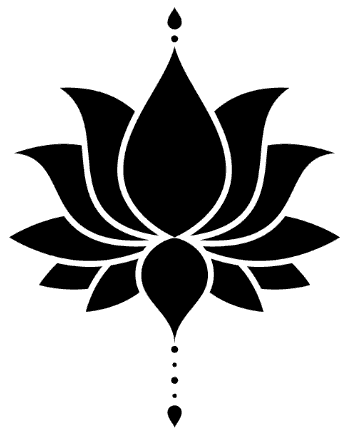
Lotus flowers bloom above the water, symbolizing emergence of the material from the spiritual realm. This is why the flower is considered a powerful symbol of fertility, creation, life, spiritual growth, and awakening in various cultures.
For instance, in Hinduism, a lotus is shown emerging from the navel of lord Visnhu who is one of the three primary gods related to creation. The lotus is said to symbolize the earth whereas the stalk is said to represent the cosmic mountain, meru, which is the central point (Axis Mundi) of the universe.
A few other flowers related to fertility are as follows:
- Daisy: The daisy flower is associated with fertility, purity, innocence, new beginnings, and youth due to its delicate appearance and abundant blooming. Its white petals symbolize purity, while the golden center represents the sun and thereby vitality, new life, and growth. In Norse mythology the petals of the daisy flower are said to have formed from the tears of Freya, a goddess of love and fertility.
- Rose: Since ancient times, rose has been associated with fertility, love, passion, and beauty. In Greece, for instance, rose is associated with goddess Aphrodite, the goddess of love, beauty, and fertility. Similarly, in Judaism, and Hinduism, roses are often used in wedding ceremonies as a symbol of fertility and love.
- Cherry Blossom: Cherry blossoms are symbols of renewal, beauty, and the transient nature of life. They are associated with fertility in some cultures, as they herald the arrival of spring and new growth.
- Lavender: Lavender is believed to have fertility-enhancing properties, particularly for women. It is associated with love, relaxation, and the promotion of fertility.
12. Tree of Life
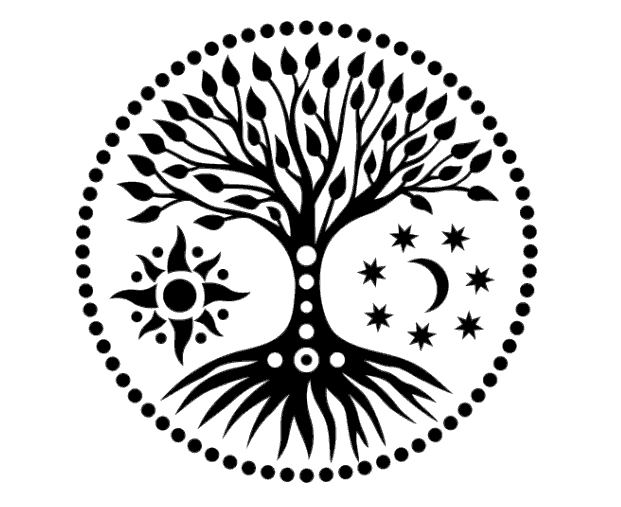
The Tree of Life and its countless variations found across various ancient cultures and civilizations is a powerful symbol of fertility as it underscores the potential for new beginnings and growth.
It primarily symbolizes the cyclical nature of life, representing the continuous renewal and rebirth of existence. This symbolism is closely associated with the concept of fertility, signifying growth, abundance, prosperity, and the nurturing qualities of nature.
13. Lada star
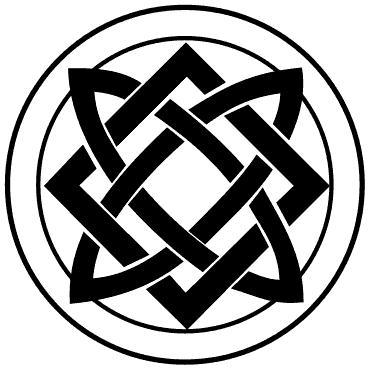
Lada (as discussed earlier), is a Salvic goddess connected to fertility, childbirth, motherhood, feminine strength, love, marriage, and family. She is also associated with agriculture and bountiful harvest. The Lada star is a symbol often associated with the goddess. It consists of four loops representing the four elements, along with a square and a circle representing the interconnectedness between the material and spiritual realms.
14. Eggs
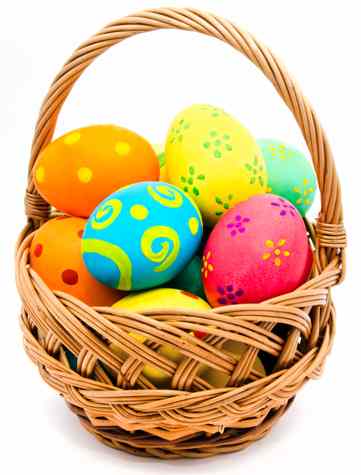
Eggs hold significant symbolism across ancient cultures, representing concepts like fertility, new beginnings, resurrection, and renewal. For instance, eggs assume a central role in Easter celebrations, which in Christianity is closely linked with the resurrection of Jesus Christ. Easter traditions often include activities like egg decoration, egg hunts, egg rolling, and the exchange of eggs as gifts.
Interestingly, the term ‘Easter’ itself originates from ‘ēastre,’ an Old English word associated with a pagan festival honoring the spring equinox. Eggs have also been used since ancient times in magical rituals to promote fertility, healing, and love.
15. Crystals and Gemstones
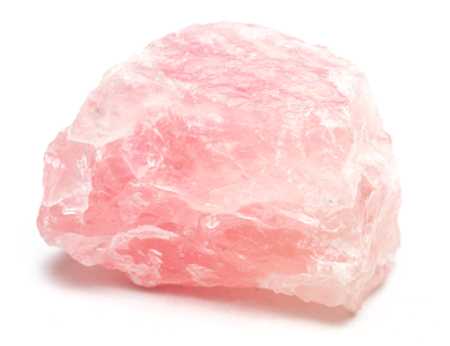
Several gemstones and crystals have been associated with fertility and are believed to have properties that support reproductive health and well-being. Here are some gemstones and crystals commonly linked to fertility:
- Moonstone: Moonstone is often associated with female fertility and is believed to enhance hormonal balance and regulate menstrual cycles. It is also thought to promote emotional balance and receptivity.
- Rose Quartz: Rose quartz is known as the “stone of love” and is believed to support emotional healing and strengthen relationships, including those within families. It can be used to enhance fertility by promoting a loving and nurturing environment.
- Carnelian: Carnelian is associated with passion and vitality. It is thought to boost fertility, especially in women, by supporting the reproductive system and increasing energy levels.
- Garnet: Garnet is believed to have fertility-boosting properties and is often associated with sexual energy and attraction.
- Unakite: Unakite is considered a stone of balance and harmony, and it is believed to support fertility and healthy pregnancies by promoting emotional and physical balance.
- Amethyst: Amethyst is known for its calming and balancing properties. It may help reduce stress and anxiety, which can be beneficial for fertility.
- Clear Quartz: Clear quartz is often used as an amplifier for other stones and intentions. It can be paired with other fertility stones to enhance their effects.
- Jade: Jade is associated with abundance and fertility in some cultures, particularly in Asian traditions. It is believed to promote harmony and balance in the reproductive system.
16. Squirrel
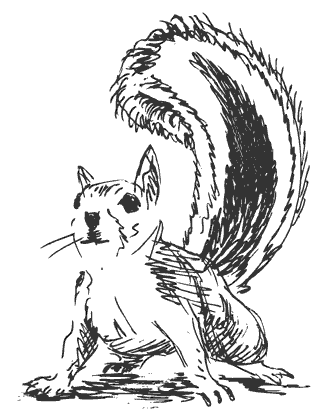
In various cultures, squirrels symbolize abundance, fertility, resourcefulness, and new beginnings. This connection may stem from their ability to reproduce rapidly and also their energetic and nurturing behavior in caring for their young. In addition, their ability to gather and store nuts and seeds for the future is also associated with fertility and preparedness.
A few other animals related to fertility are as follows:
- Gold fish: Goldfish are known for reproducing rapidly and producing a large number of offspring in a short period, which symbolizes fertility, good luck, and abundance. This is the reason why in various cultures they are popular choices for decorations during weddings and other celebrations.
- Peacocks: Peacocks are symbols of fertility and beauty. Their vibrant plumage and elaborate courtship displays are associated with vitality and procreation.
- Elephants: Elephants, particularly the elephant-headed deity Ganesha in Hinduism, are linked to fertility, wisdom, and good fortune. Ganesha is often invoked for blessings related to fertility and new beginnings.
- Bees: Bees are associated with pollination and the abundance of flowers and crops. Their industriousness and role in plant reproduction link them to fertility.
- Rabbits: Rabbits are known for their ability to reproduce rapidly and produce many offspring, which has led to the symbolism of rabbits as a representation of fertility and abundance in various cultures and traditions.
17. Pomegranates
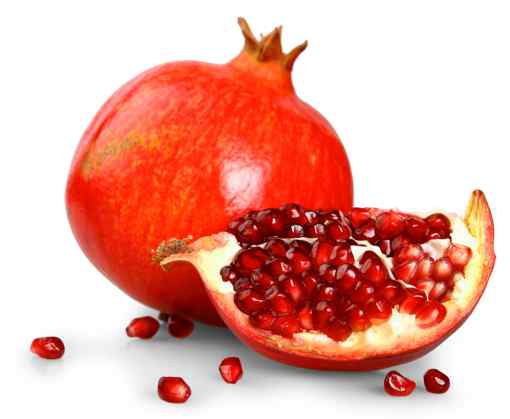
The pomegranate fruit is seen as a powerful symbol of fertility in many cultures. This is primarily due to its abundance of seeds and its vibrant red color.
Not surprisingly the fruit is sacred to many goddesses related to fertility, harvest, and femininity, including Greek goddesses Aphrodite and Demeter, Roman goddess Juno (Hera in Greek mythology), and the Egyptian goddess Isis.
Similar to pomegranates, a few other fruits related to fertility are as follows:
-
- Dates: Dates are considered a symbol of fertility and have been used in various cultures to enhance fertility.
- Figs: The fig tree is often associated with fertility because of its abundant fruit production and the presence of numerous seeds within its fruit. Figs, much like pomegranates, have symbolized fertility due to their abundance of tiny seeds and the lush, plump quality of the fruit, which carries a distinctly feminine essence.
- Cherries: Cherries are sometimes considered a symbol of love and fertility due to their vibrant red color.
- Grapes: Grapes have been associated with fertility and abundance, especially in Mediterranean cultures.
- Apricot: Apricots are associated with fertility and have been used in fertility rituals and traditions.
18. Snakes
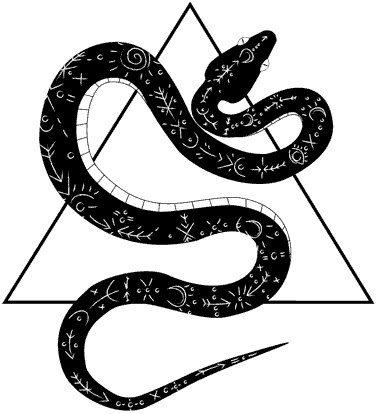
Snakes have been seen as symbols of fertility in various cultures and mythologies throughout history. This association primarily stems from their shedding of skin, which is seen as a powerful symbol of renewal and rebirth. Snakes typically shed their skin every 4 to 12 weeks, depending on age and species.
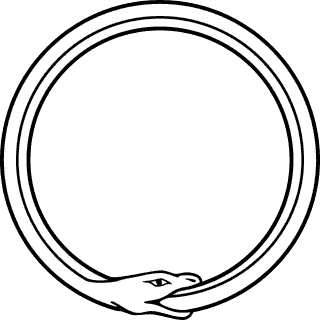
An ancient symbol depicting snakes is the ouroboros (a snake eating its tail), which symbolizes the eternal cycle of life, and the interconnectedness of all living things.
Conclusion
Fertility is a fundamental force that underlies the very fabric of our universe. The symbols presented in this article can help you tap into this powerful energy, enabling you to manifest your desires into reality. Choose the symbol(s) that resonate with your energy and use them in your life by meditating on them, placing them on your altar, wearing them, or using them in your visualization practices to reap their benefits.


